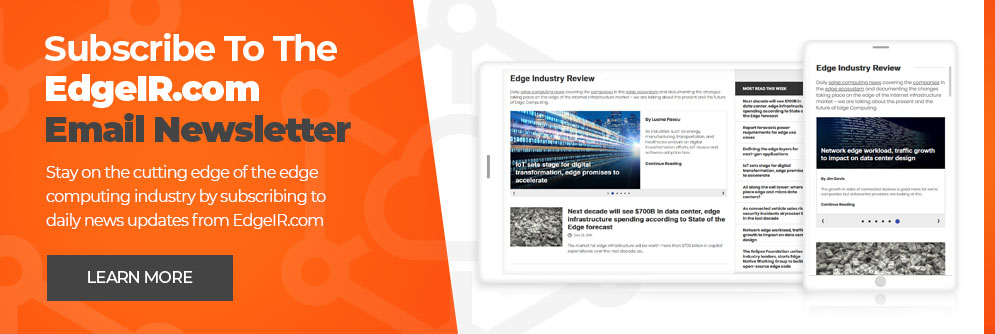Privacy intrusion: Hold all the cards with edge computing

By Marc-Elian Bégin is CEO and co-founder of SixSq
In poker rooms around the world, players keep their cards close. It’s the only way to avoid prying eyes. There’s an important lesson here for organizations collecting data, video and audio — these inputs are your cards and absolutely no one else should see them. The wealth of information from your sensors, cameras, microphones, actuators and other new digital sources should yield valuable insights without intrusion.
Privacy intrusion is a hot topic
When talking with customers, partners and prospects, I’m surprised by how frequently the topic of privacy intrusion comes up, and this is usually part of a broader conversation around the importance of data sovereignty. In Europe, these discussions typically reference the General Data Protection Regulation (GDPR) data privacy and security law, while in the Americas and further afield, other reference points are used to understand and interpret the laws around digital privacy.
What can you see?
As the cost of easy-to-deploy digital source equipment is going down, technical capabilities are going up, so you can understand, see and hear much more from your input streams than ever before. For example, today’s latest video cameras deliver extremely high levels of image definition. This is great for generating precise insights on, say, product quality or behavioral analysis — information that’s very valuable to your organization and to others.
Why keep this information close?
No one else should be able to see your information — or that of your customers. There are onerous standards and regulations around the operation and management of surveillance equipment, including closed-circuit television (CCTV). These requirements represent such a burden that most organizations are unwilling or unable to comply. But without adequate protection of information, there is a very real and growing risk of someone snooping on you.
How to avoid prying eyes?
A key promise of edge computing is that instead of sending your data, video and audio to the cloud to be processed, you keep it close. All of your input streams are processed locally, near the digital device that generates them. Here’s what is gained:
- Higher-quality insights: When streams are processed in their entirety near to source, they yield the best possible results. But when streams are transported over the network to the cloud for processing, their quality is reduced and this can result in degraded insights.
- Speedier insights: Your time to insight is faster if you process streams locally — this can be done in real-time and without any delays or round trips. Instead, sending streams over the network can cause perturbations and delays, especially if connections are weak and bandwidth is limited. Also as video and audio definition increases, data size increases and journeys to the cloud take longer.
- Easy data fusion: Because your data is available at the edge, analysis can be easily performed here on all different categories of data (video, audio, etc). An example is analysis both of the sound of a noisy vehicle and images as the vehicle passes, showing its brand, model and number plate. Data fusion such as this enables more powerful analytics – in this case, it could mean better predictive maintenance or regulation enforcement.
- Tighter privacy: The excellent news is that all the above are achieved without privacy intrusion. Why would you want to move, process and store privacy-sensitive data in the cloud — which, by the way, additionally requires designing and managing a whole layer of cloud privacy applications? Instead, with edge computing the same information stays local and is stripped from any data that might intrude on the privacy of citizens or corporations.
- Better control: With edge computing, you call the shots. A well-managed edge computing solution puts you in remote control, able to update the devices and apps running at the edge, aligned with your changing needs. So as your organization evolves, so too can your edge computing strategy.
In summary, there’s no question that edge computing provides better control over how and where your data is used. That’s a good poker hand enterprises should bet on now.
About the author
Marc-Elian Bégin is CEO and co-founder of SixSq. Founded in 2007, SixSq helps customers build edge-to-cloud solutions to deliver real and tangible benefits to society. Marc-Elian holds a B.Eng. in Mechanical Engineering from Ecole Polytechnique of Montreal, specializing in Aerospace. Bégin has worked with the Canadian and European Space Agencies, as well as CERN, on distributed software systems, grid and cloud computing development projects.
DISCLAIMER: Guest posts are submitted content. The views expressed in this post are that of the author, and don’t necessarily reflect the views of Edge Industry Review (EdgeIR.com).
Cox Edge expands footprint as it seeks to build presence in media, retail verticals
HostDime’s Brazil data center to be powered by solar
Article Topics
data management | data sovereignty | edge computing | GDPR | privacy | regulation | security | SixSq


Comments